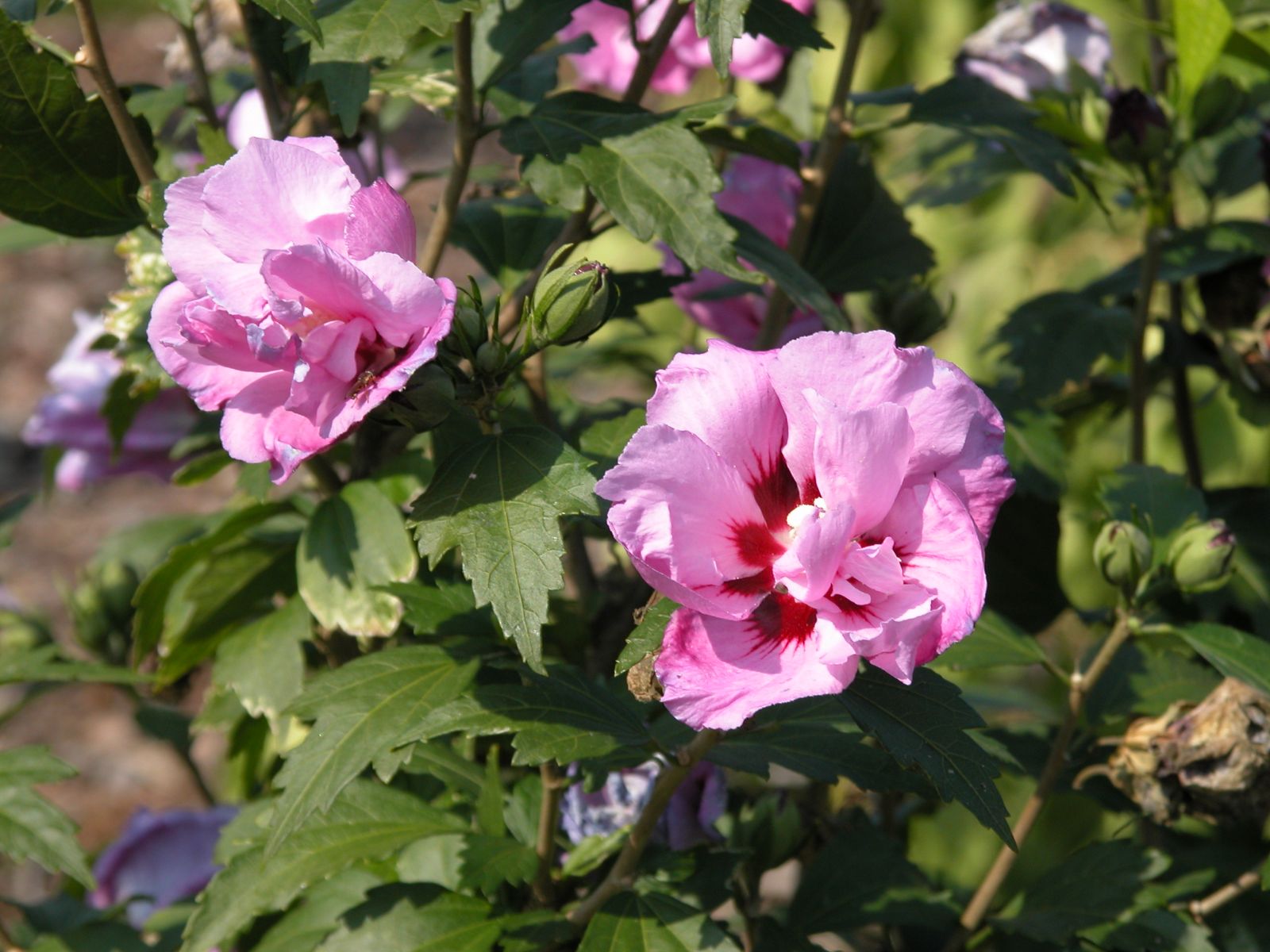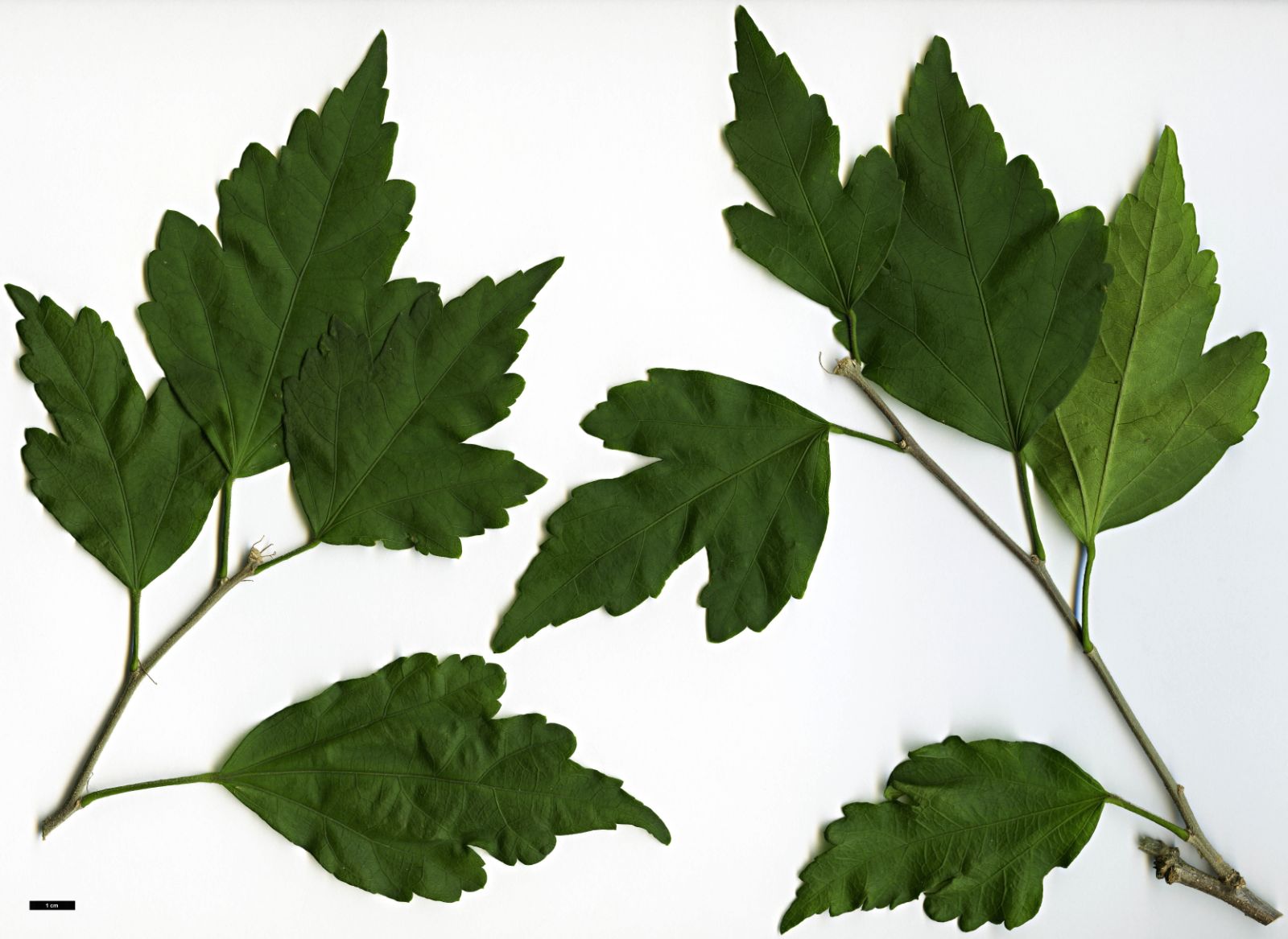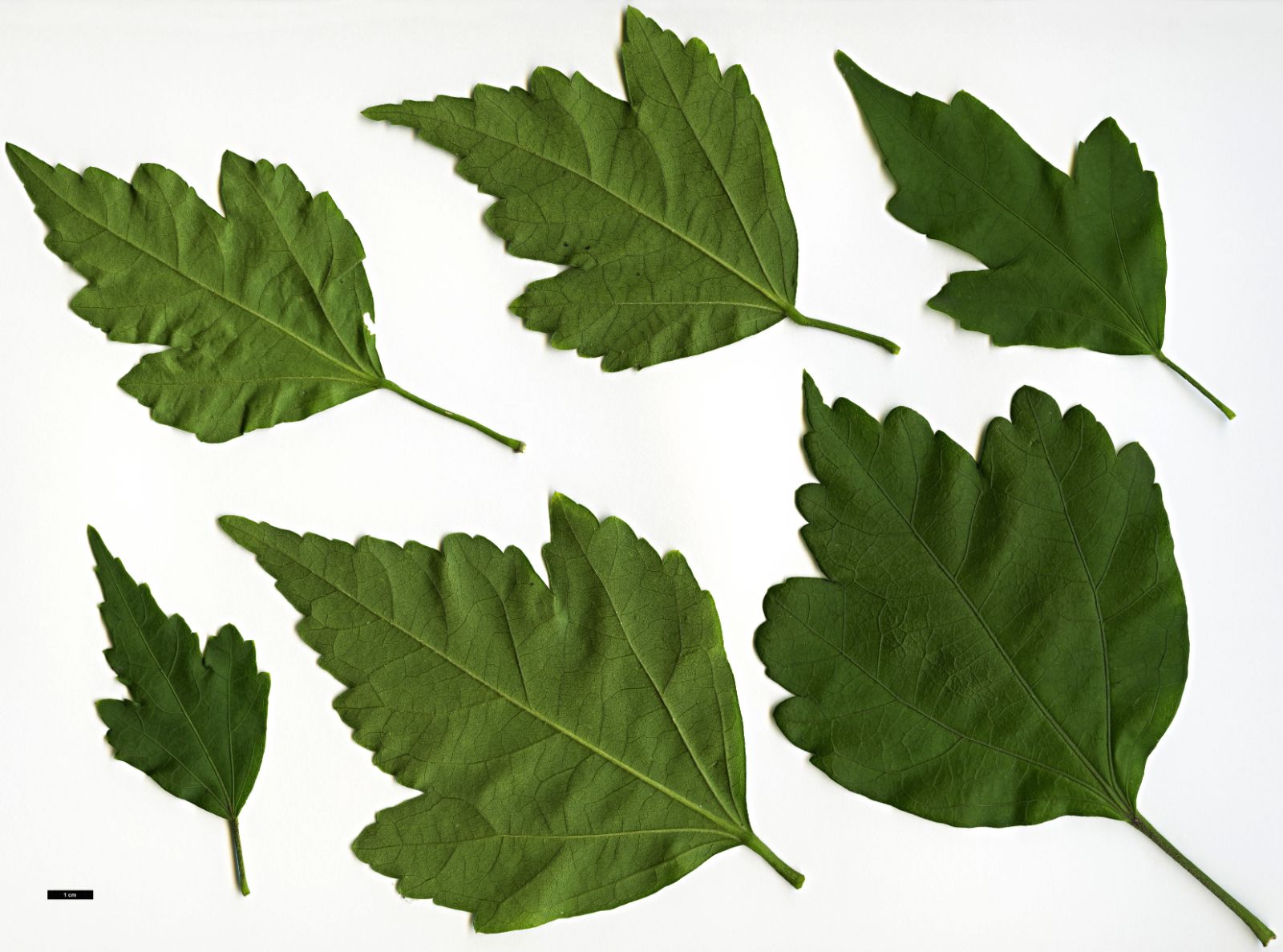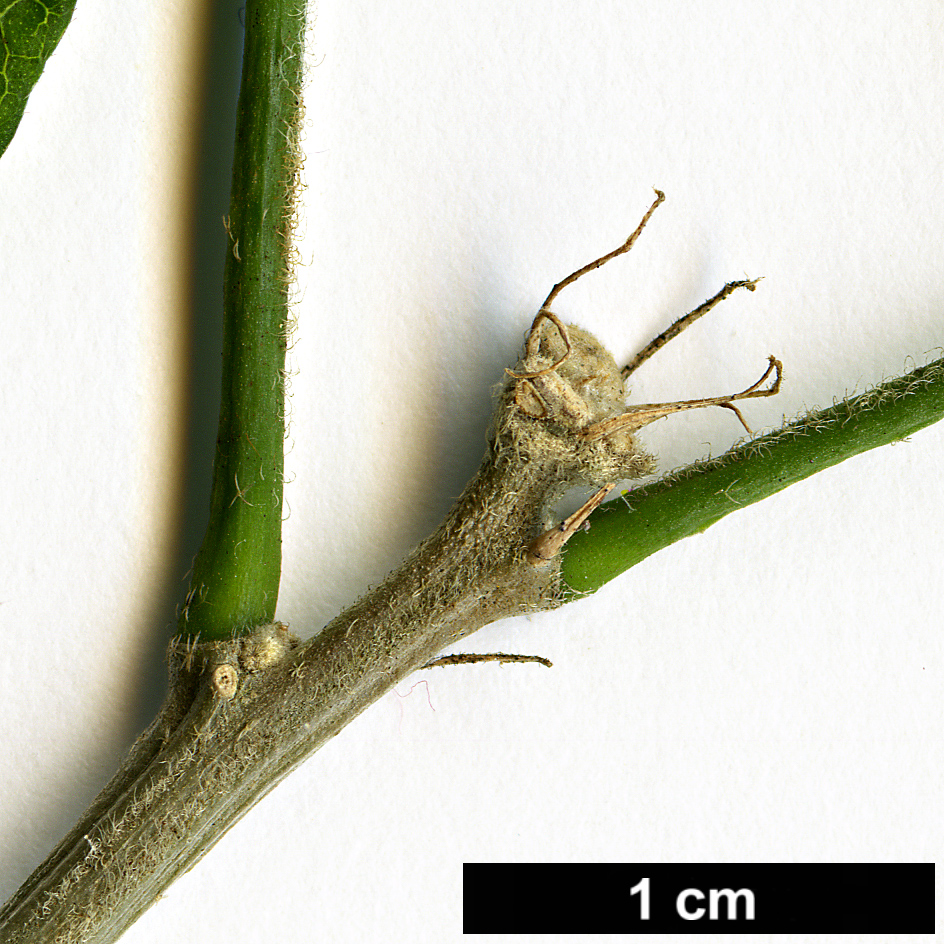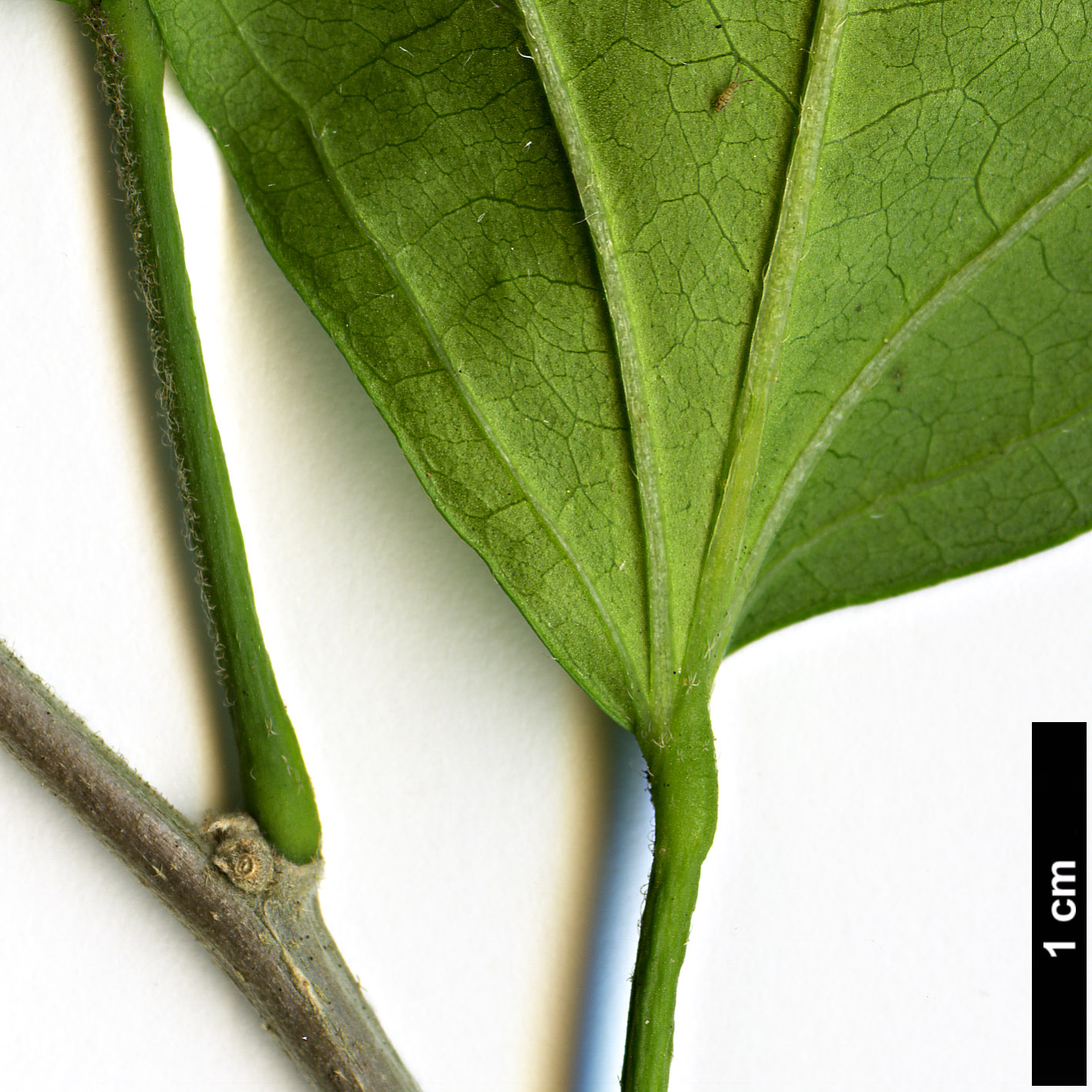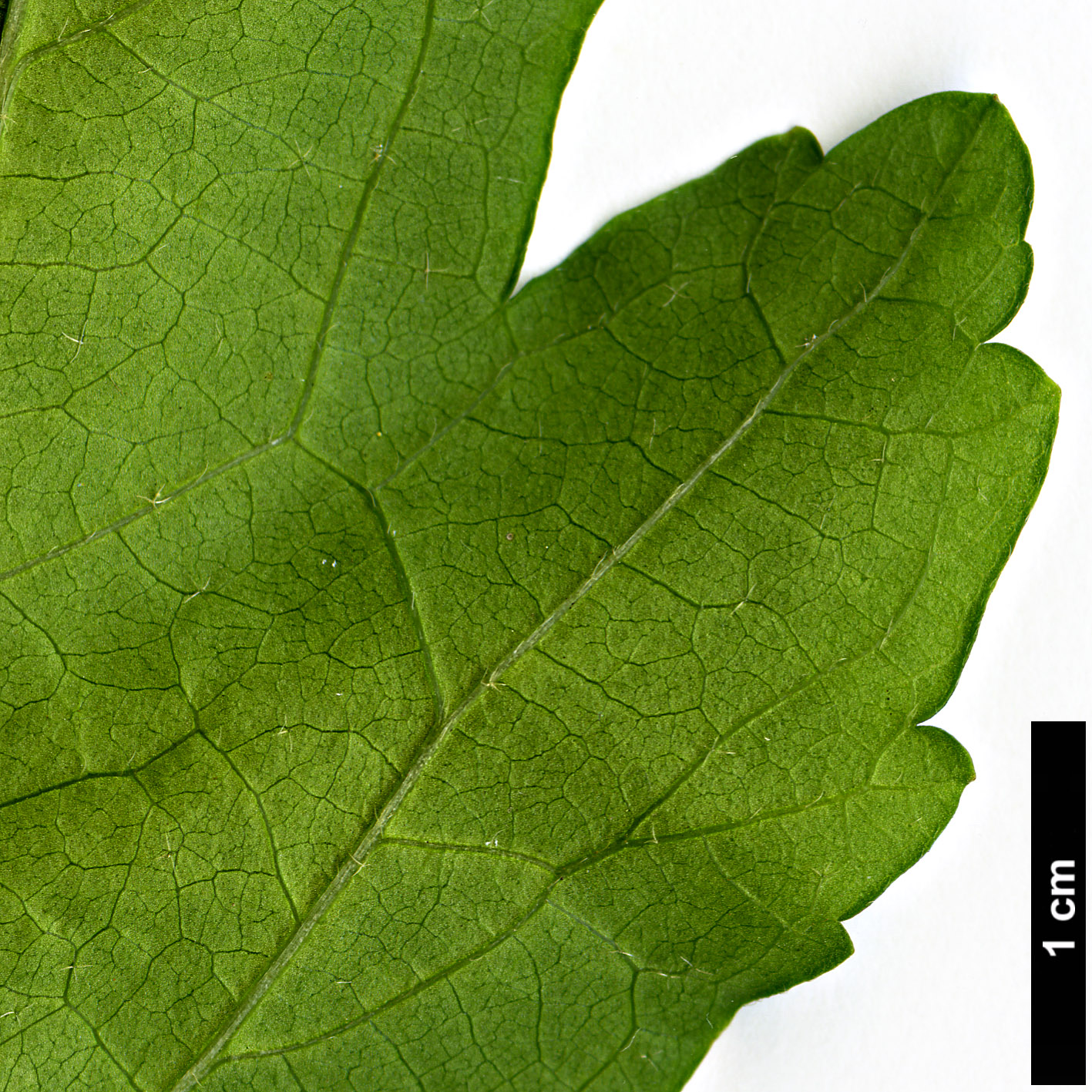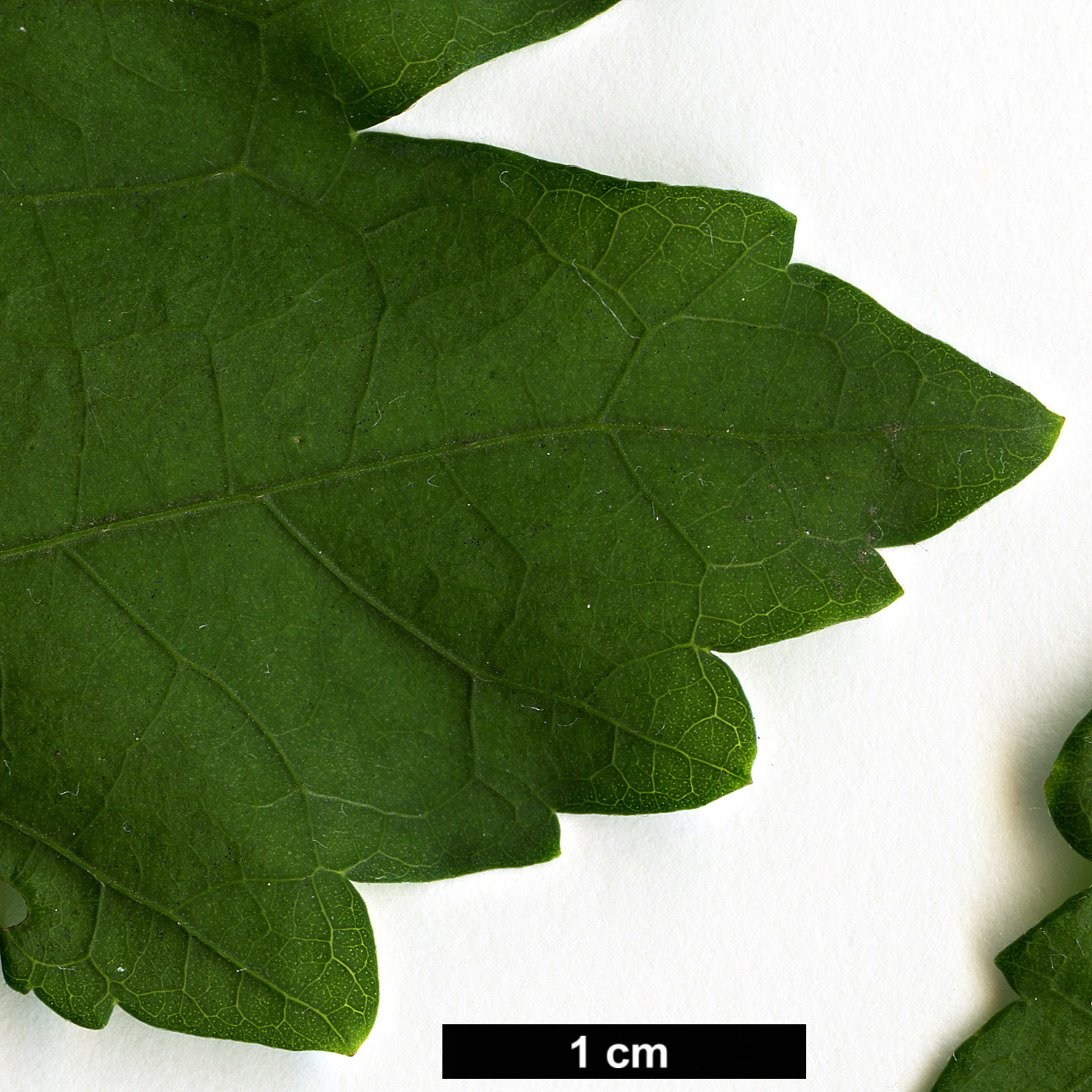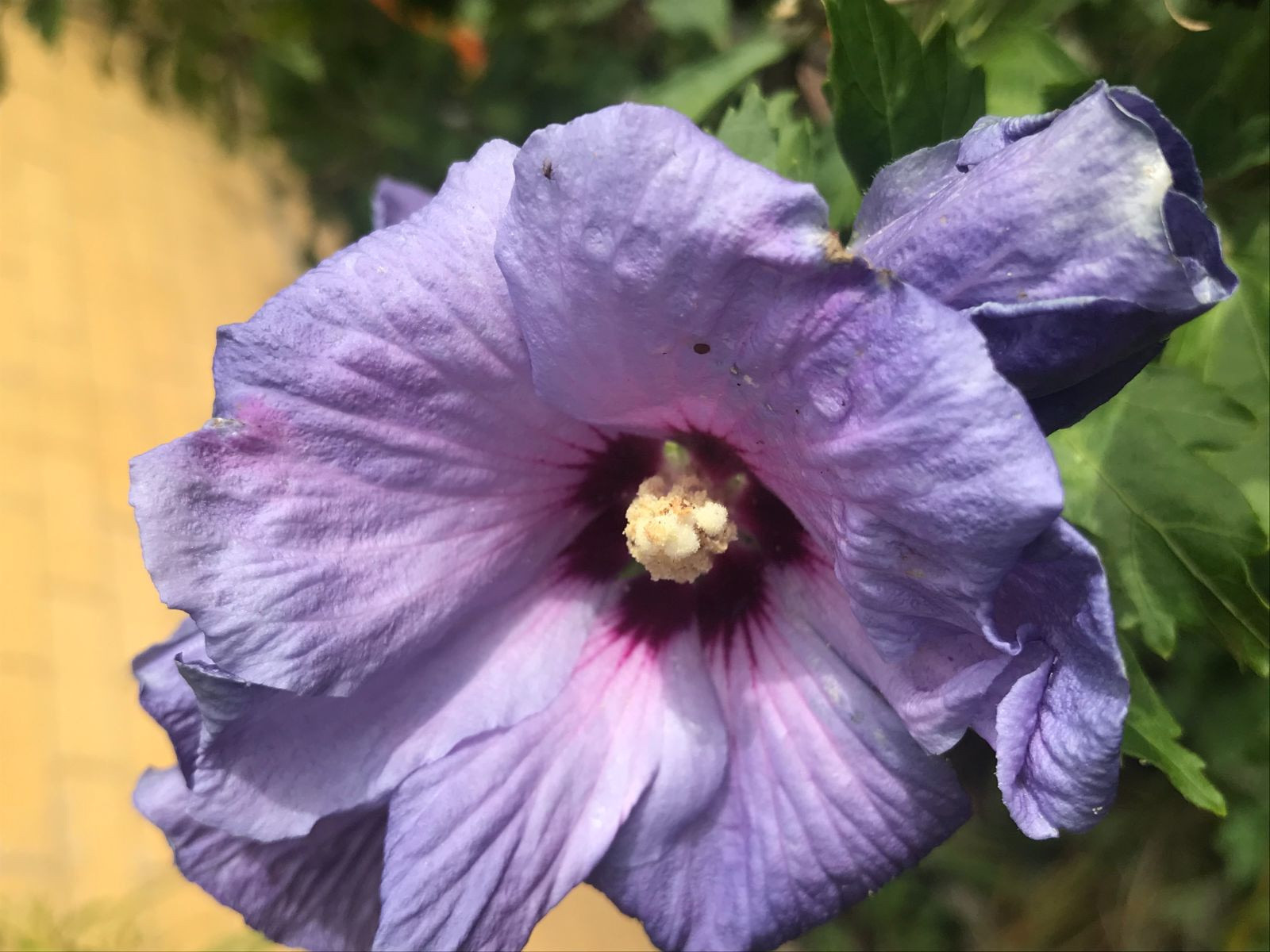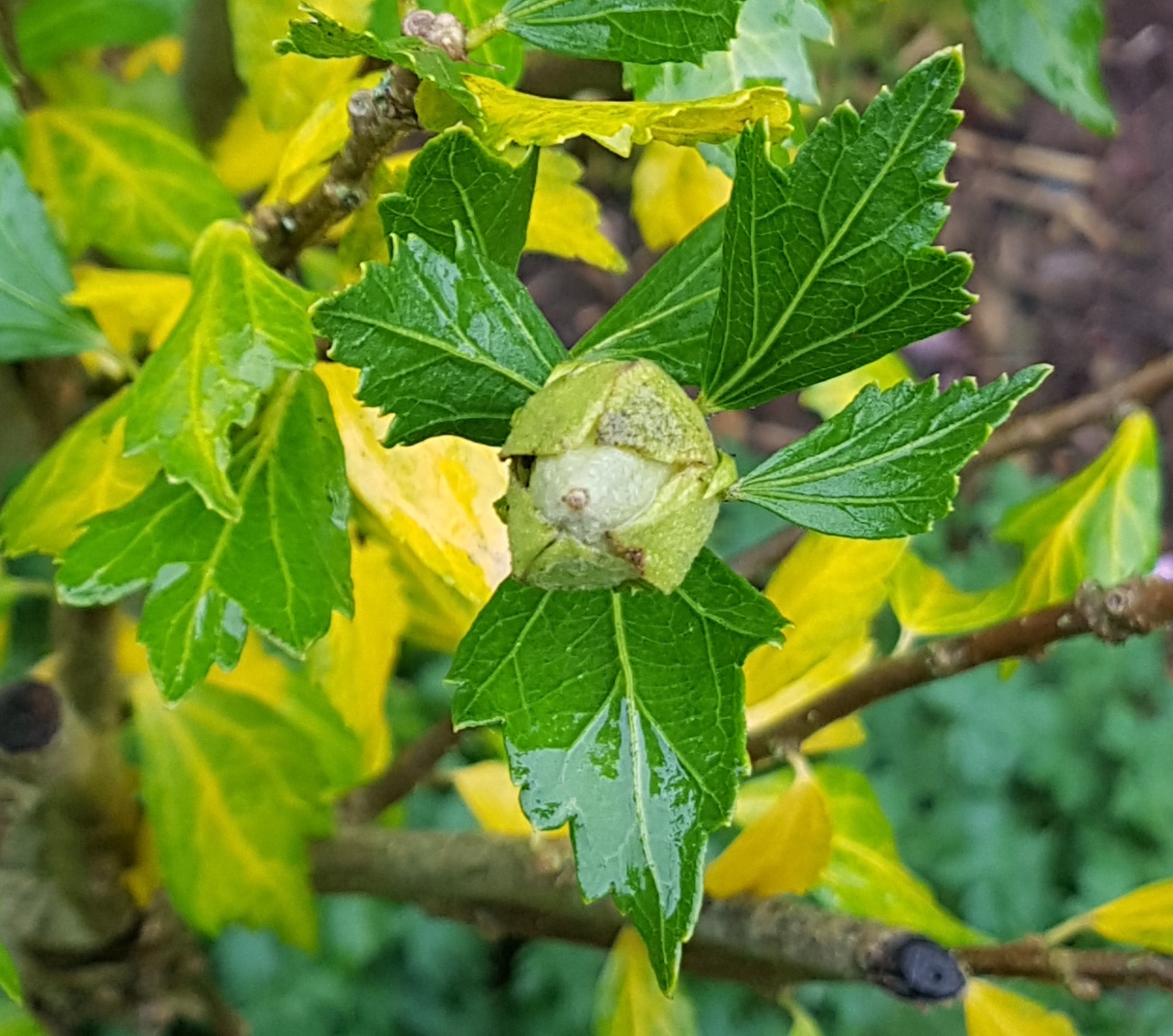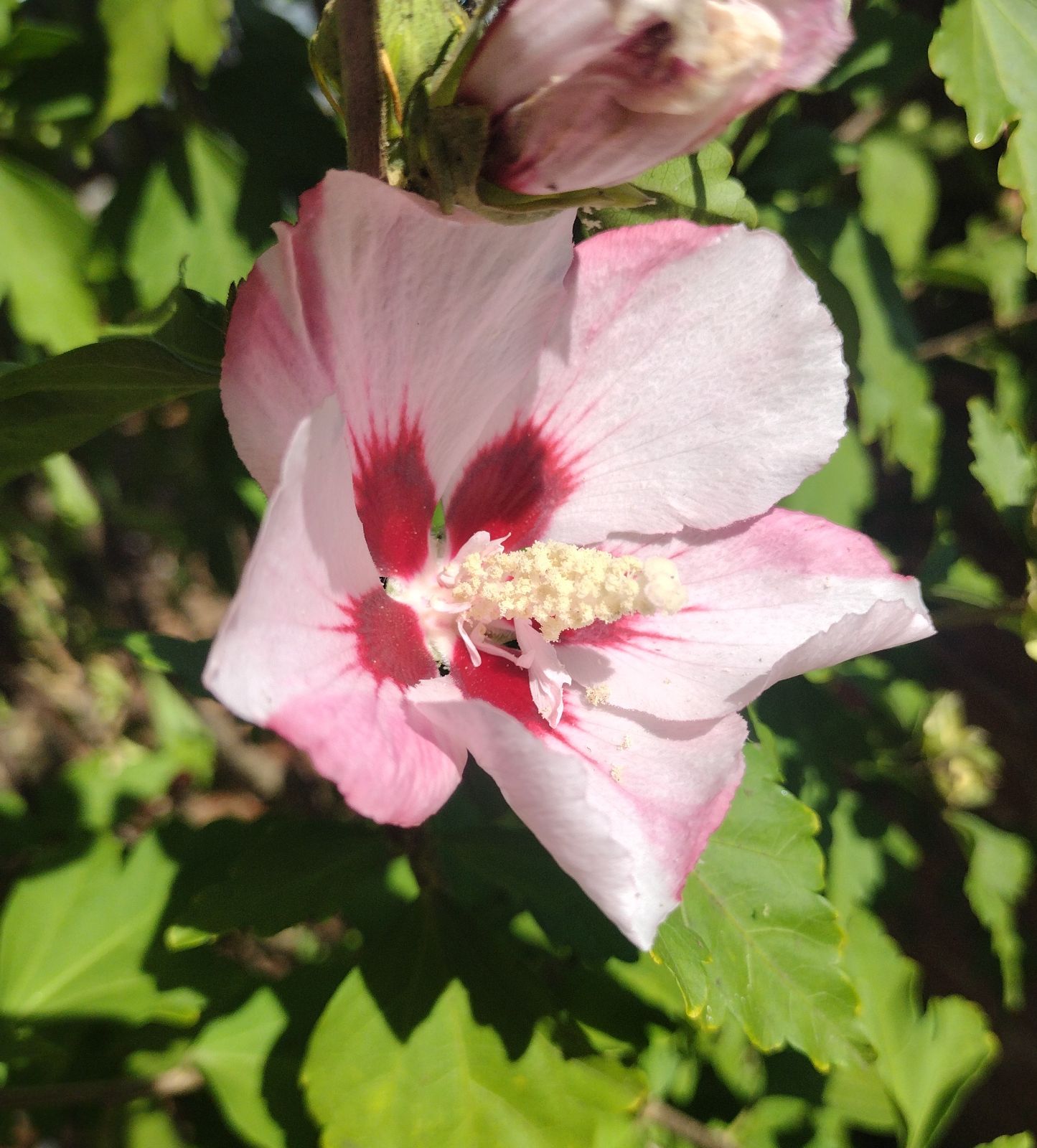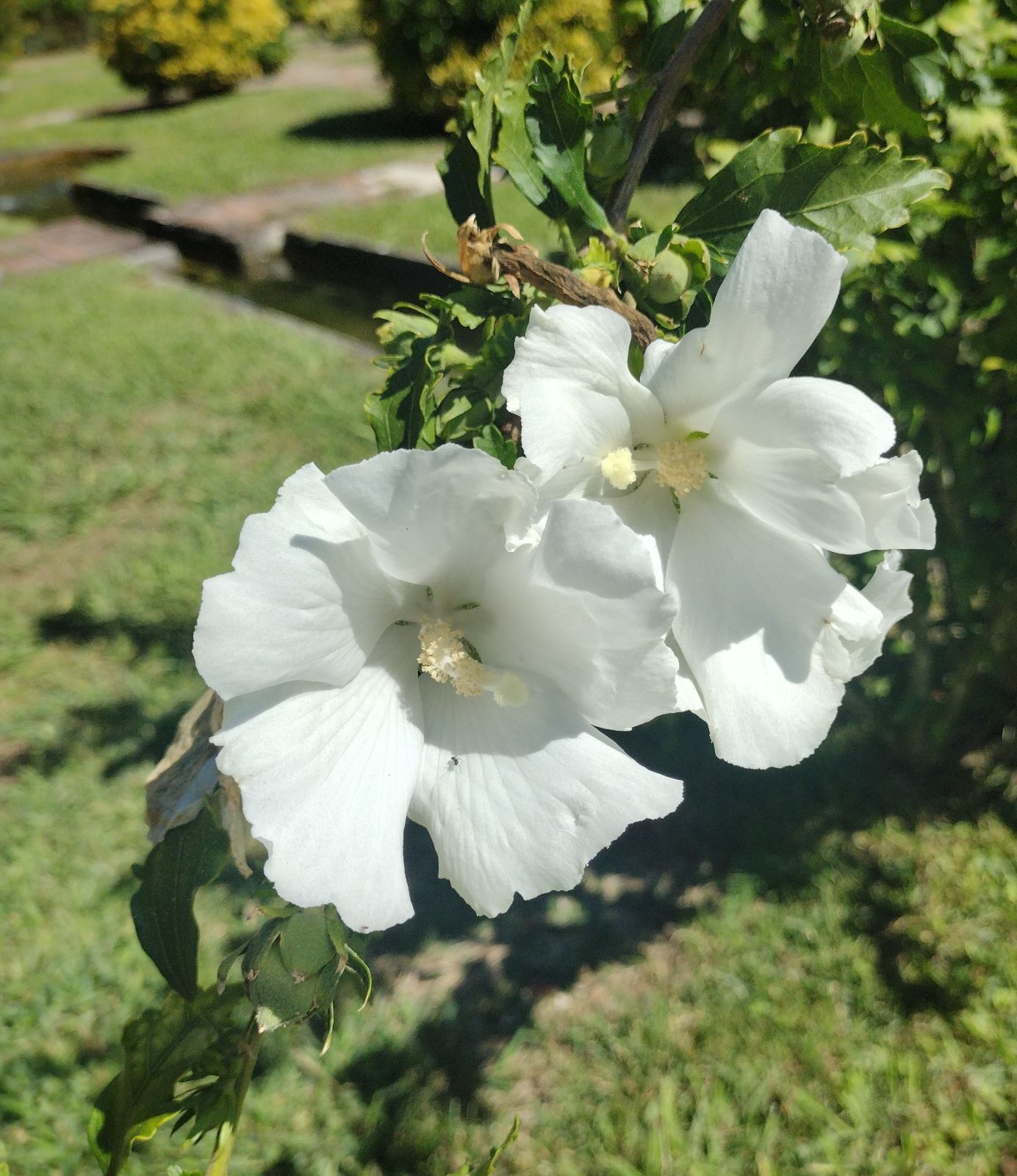Hibiscus syriacus
Credits
Article from Bean's Trees and Shrubs Hardy in the British Isles
Recommended citation
'Hibiscus syriacus' from the website Trees and Shrubs Online (treesandshrubsonline.
Genus
Synonyms
- Althaea frutex Hort.
Infraspecifics
Other taxa in genus
A deciduous shrub, with rather erect branches but bushy habit, up to 10 ft and more high. Leaves variable in size, ordinarily from 2 to 4 in. long, of ovate outline, more or less distinctly three-lobed and coarsely toothed, glabrous except for an occasional bristle on the veins, stalk 1⁄4 to 1 in. long. Flowers produced singly on short stalks from the leaf-axils towards the end of the branch. Each flower is from 21⁄2 to 4 in. across, with five free petals forming a trumpet mouth. The colour is exceedingly variable in the numerous forms of this shrub, some being white, others red, violet, purple, or striped; others again have double or semi-double flowers. Calyx unequally five-lobed, with an involucre of linear bractlets scarcely 1⁄12 in. wide and shorter than the calyx.
The date of the introduction of this shrub to Britain is not known, but as it was included by Gerard among the garden shrubs of his time, it has been cultivated here for probably 350 years. In early times it was known as the ‘Syrian Ketmie’, and in the specific name Linnaeus suggested that it was from Syria, but it has never been found truly wild except in India and China. In Syria, as in more western countries, it exists as a cultivated plant only. It is perfectly hardy in most parts of Britain, but owing to its late-flowering habit, it is often necessary in the north to treat it as a wall plant in order that its flowers may develop under more favourable conditions. In the south, where the cold rains do not come so early, it can be grown quite in the open, and there is no shrub more beautiful during September, especially if that month be hot and sunny. In selecting a place for it, shady and ill-drained spots should be avoided. Any soil of moderate or good quality suits it. It can be propagated by cuttings or by layers, and rare sorts may be grafted on common ones. Plants growing too large for their places may be pruned back in early April. One of the common features of the gardens at Versailles are large bushes of this hibiscus, cut hard back annually into formal shape. Both in France and in Italy it flowers with greater profusion and regularity than under our uncertain skies. A great number of varieties have been raised and named, and the following list must only be regarded as a selection of a representative few of approved merit. On the whole, single-flowered ones are to be preferred.
Flowers Single
'Admiral Dewey'
Flowers white, double. Raised in the USA at the end of the 19th century.'Autumn Surprise'
Petals white, with attractively feathered cerise base.'Blue Bird'
Flowers large, opening widely, rich mauvish blue with a deeper centre. A.M. 1965. Raised in France and originally named ‘Oiseau Bleu’.
'Coelestis'
A reliable old variety similar to the newer ‘Blue Bird’ but with slightly smaller flowers. A.M. 1897.‘Dorothy Crane’. See under ‘Monstrosus’.'Duc de Brabant'
Flowers very double, deep crimson-pink, maroon in bud‘Elegantissimus’. See under ‘Lady Stanley’.'Hamabo'
Flowers white, blush-tinted, with conspicuous bronzy markings in the throat. A.M. 1935. Not to be confused with the species H. hamabo Sieb. & Zucc. Raised in Japan.
'Lady Stanley'
Flowers semi-double; petals white, shaded with rose and blotched with crimson at the base. An old variety, listed by Barron’s Nurseries, Elvaston, near Derby, in 1875 and perhaps raised by them. There appears to be confusion between this variety and ‘Elegantissimus’, which, according to the American authority Dr Donald Wyman, has semi-double flowers of a pale purplish pink, with deep pink blotches and red streaks reaching three-quarters of the way to the ends of the petals (Arnoldia, Vol. 18 (1958), p. 48 and pl. xi).'Lilac Queen'
Petals flushed lilac, with garnet-red base.'Mauve Queen'
Flowers mauve with a crimson throat. Raised by Messrs Notcutt.'Monstrosus'
This old variety with white, crimson-centred flowers is superseded by two new introductions – ‘Dorothy Crane’, raised by Messrs Notcutt; and ‘Red Heart’, of French origin.‘Rubis’. See under ‘Woodbridge’.'Ruby Glow'
Petals white, with cerise base.Their flowers do not open so widely as those of H. syriacus, but they are more handsome in foliage.'Totus Albus'
Flowers pure white.


